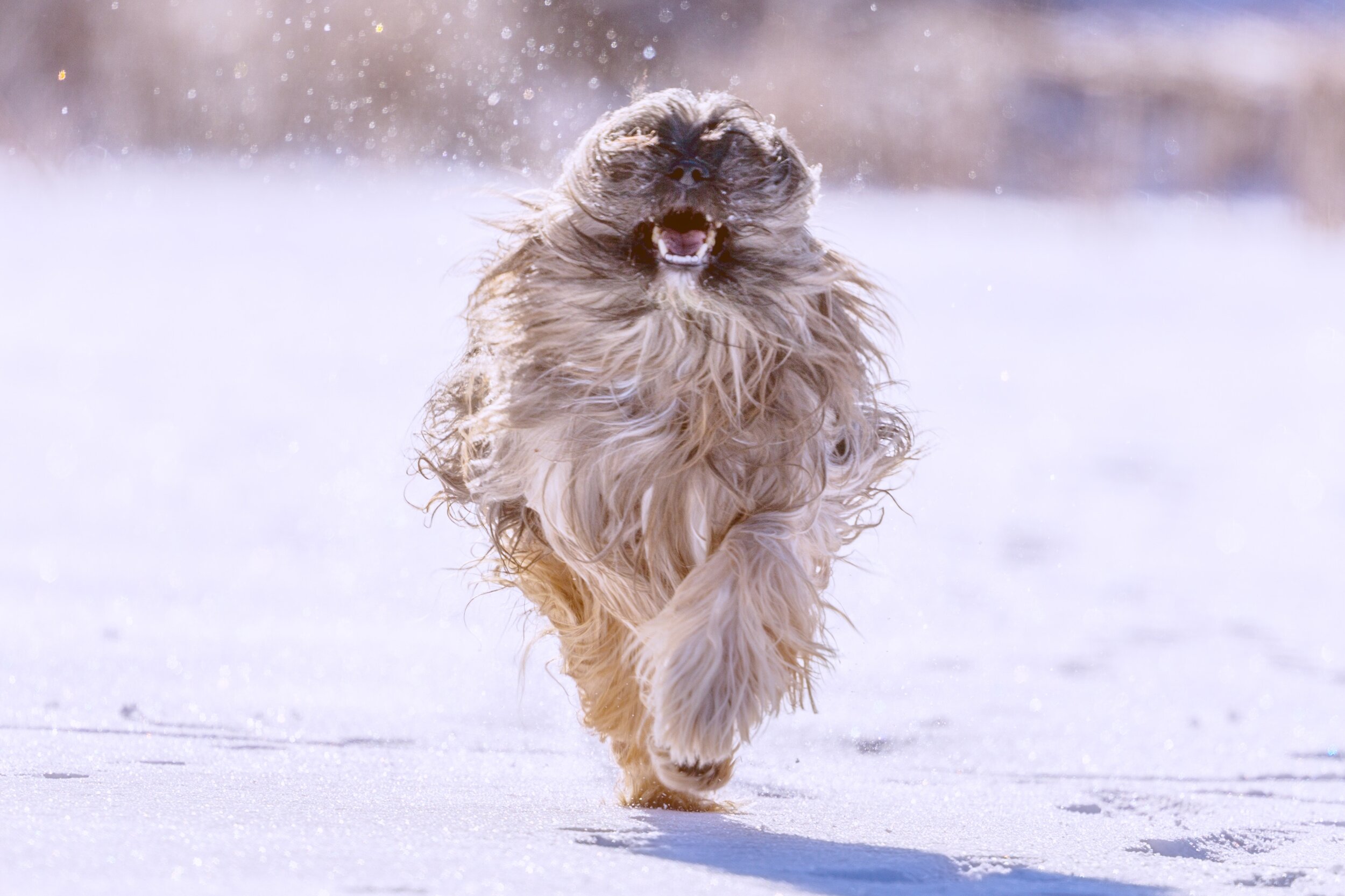Your dog learns all the time
1. Learning happens all the time.
Dogs learn all the time, not only when we decide to train them. Your dog will quickly learn that by sitting by your table and looking at you while you eat – he will eventually get a little bit of your food. Food gives a positive consequence for anything that dog has been doing, regardless if you intended to or not. And what has a positive consequence, gets repeated.
But positive consequences do not only mean food. When your dog is barking at the closed doors and you stand up and open them for him, he will learn what to do next time when he wants to get to the other room. When your dog is pulling on the lead and gets to an interesting scent, the fact that he could sniff it has the likelihood of reinforcing the pulling. When your dog is jumping and running around in excitement because you are getting ready to get out of the house and you take him for a walk while he does that – his walk is a reinforcer for his excited behaviour.
And it’s not only positive consequences that change behaviour. When your dog gets stung by a bee while sniffing a particular flower, he might pair his pain of being stung with this flower or the place where it happened and avoids them in the future. If he got attacked by a black dog when he was a puppy and suffered an injury, he might start avoiding all black dogs, regardless of the breed, size or temperament.
Our world is full of negative consequences of our behaviour. And it is crucial for our survival to learn from those events. When you get burned by a hot oven – you immediately take your hand away. Imagine what would happen if you wouldn’t? Our biology equipped us with this survival mechanism and we should be grateful for it.
However, we are also equipped with a mechanism that makes us behave in a way that gets us what we want. And when we experience positive consequences of our certain behaviour in a certain environment, we repeat that behaviour in this environment.
Now, we can think that when we are trying to teach others or our animals, we need to use both of those mechanisms. But studies about errorless learning show, it’s not the case. Your dog learns all the time both from positive and negative consequences he receives. Whether you like it or not, your behaviour is a big influence on your dogs’ learning. I would encourage you to focus on the positives and the things that you want to see in him. Focus on what you want, reinforce it and see more of it.
2. Focus on what you want and reinforce it
To reinforce behaviour that we want to see more of, we need to find a way to tell our dogs that they have done a great job. And we need to tell them that when they’ve done it. You cannot talk to them later on and say: ‘yesterday when I called you, you ran towards me straight away. I loved that! Great job Teddy!’. Unfortunately, dogs do not understand English, no matter how much we would love them to. The way to communicate with them clearly is to give them something they like right after the behaviour. In their mind, the last behaviour that they performed needs to pair up with a positive consequence that they received afterwards. So, you can tell your dog that he has done a great job by offering him something he loves. But it needs to be something that he truly wants at this moment in time.
We many times fall into a trap of giving our dogs something that we feel is positive for him when it actually isn’t at that time and place. One of the most common examples of that is a pat on the head. It might come as a surprise to you that not every dog likes it. Some even hate it. So, when you want to tell your dog “Good job!”, but at the same time you pat him on the head when he hates it – you are actually giving him a negative consequence. Next time he will try to avoid your hand after his behaviour. For example, you call your dog and you are very happy that he came. First, you sound happy and praise him, but later you pat him on the head. Therefore, next time, when your dog loves you praising him, he will continue to come to you but he will try his best to avoid your touch. He might stay one meter away from you. Waiting for your praise, but avoiding your hand on his head.
I believe that the first thing you should do is to start observing and noticing the patterns. Oftentimes we live in our heads and we don’t even notice what is happening. That’s why we fail to reinforce good behaviours in our dogs. We simply don’t notice when our dog is sleeping quietly when we are checking our emails. We only notice when he starts barking for our attention. I believe we should start by focusing on what we want to see. Notice that it is already there, it just goes unnoticed. When you reinforce that, you will see more of it. Later on, you can start adding complexity to it.
Be a superhero for your dog, he will love you for it!





